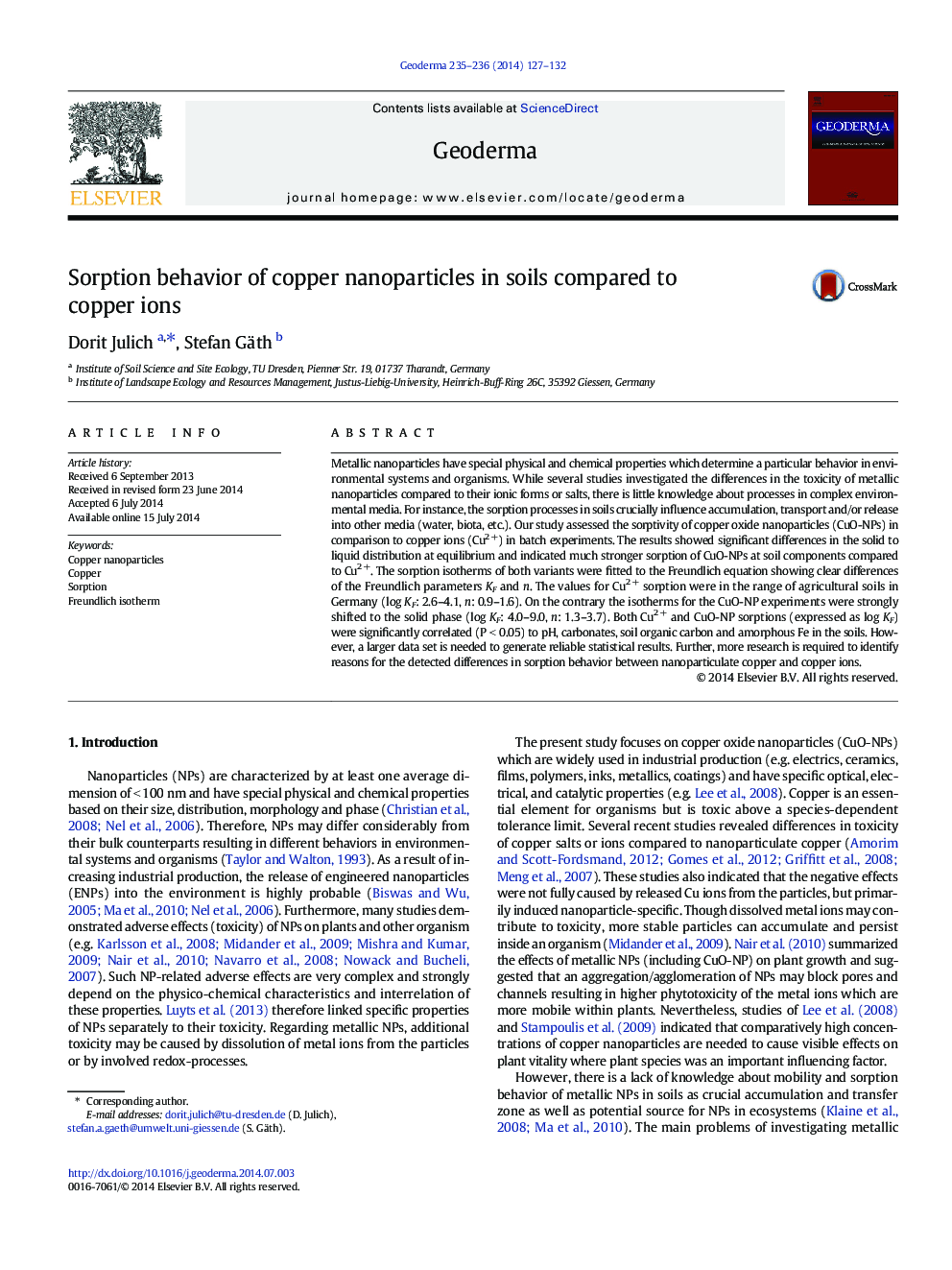| Article ID | Journal | Published Year | Pages | File Type |
|---|---|---|---|---|
| 4573311 | Geoderma | 2014 | 6 Pages |
•We examined the sorption behavior of Cu nanoparticles compared to Cu ions in soils.•The solid to liquid distribution was significantly different for CuO-NP and Cu ions.•We fitted sorption data of Cu nanoparticles and Cu ions to the Freundlich equation.•The log KF values were much higher for CuO-NP (4.0–9.0) compared to Cu2 + (2.6–4.1).•Most influencing parameters on sorption were pH, carbonates, SOC and amorphous Fe.
Metallic nanoparticles have special physical and chemical properties which determine a particular behavior in environmental systems and organisms. While several studies investigated the differences in the toxicity of metallic nanoparticles compared to their ionic forms or salts, there is little knowledge about processes in complex environmental media. For instance, the sorption processes in soils crucially influence accumulation, transport and/or release into other media (water, biota, etc.). Our study assessed the sorptivity of copper oxide nanoparticles (CuO-NPs) in comparison to copper ions (Cu2 +) in batch experiments. The results showed significant differences in the solid to liquid distribution at equilibrium and indicated much stronger sorption of CuO-NPs at soil components compared to Cu2 +. The sorption isotherms of both variants were fitted to the Freundlich equation showing clear differences of the Freundlich parameters KF and n. The values for Cu2 + sorption were in the range of agricultural soils in Germany (log KF: 2.6–4.1, n: 0.9–1.6). On the contrary the isotherms for the CuO-NP experiments were strongly shifted to the solid phase (log KF: 4.0–9.0, n: 1.3–3.7). Both Cu2 + and CuO-NP sorptions (expressed as log KF) were significantly correlated (P < 0.05) to pH, carbonates, soil organic carbon and amorphous Fe in the soils. However, a larger data set is needed to generate reliable statistical results. Further, more research is required to identify reasons for the detected differences in sorption behavior between nanoparticulate copper and copper ions.
